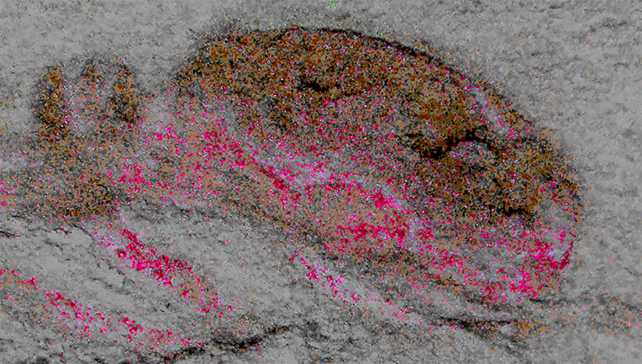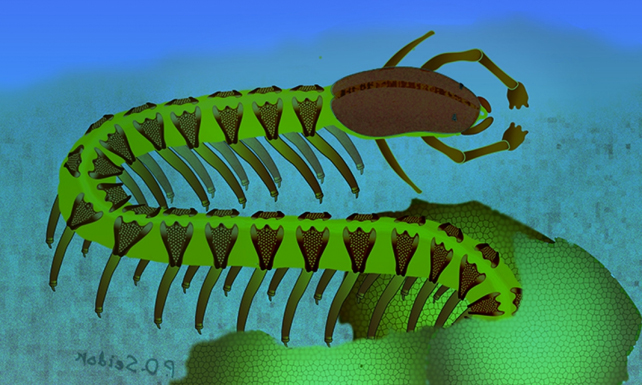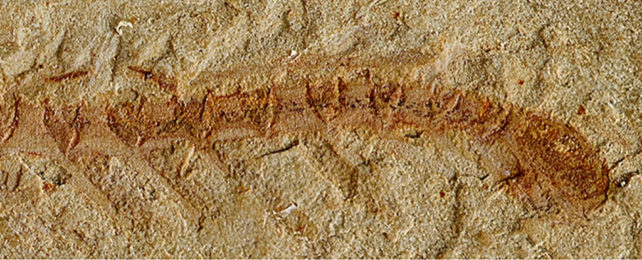A newly discovered brain in a 525-million-year-old arthropod fossil looks to be the oldest found so far – and it may have settled an ongoing debate about how brains first evolved in these invertebrate animals.
Spotted in a tiny, armored lobopodian known as Cardiodictyon catenulum, the surprise is that the brain survived at all and that it was made up of three components distinct from the nervous system.
That's important because it suggests that the brain evolved separately from the head and the nervous system.
It had previously been thought that the brains of these creatures were split into repeating segments of neural structures called ganglia, just like the nervous system in the trunk.
"This anatomy was completely unexpected because the heads and brains of modern arthropods, and some of their fossilized ancestors, have for over a hundred years been considered as segmented," says neuroscientist Nicholas Strausfeld from the University of Arizona.
The fossil was discovered in the southern Yunnan province in China in the late 1980s. The worm-like C. catenulum would have originally scuttled around the sea floor using multiple pairs of soft and stubbly legs.

As the fossil measures just 1.5 centimeters (0.6 inches) in size, the team couldn't X-ray it. Instead, they used a method called chromatic filtering, where a succession of high-resolution digitalized images are used to filter out light of different wavelengths and map the internal structure.
The revealed head and brain morphology were then compared to other fossils, the arthropods of today, and their gene expression patterns. The comparisons suggest that the same brain organization blueprint has continued for half a billion years.
"We have identified a common signature of all brains and how they formed," says evolutionary neuroscientist Frank Hirth from King's College London in the UK.

"We realized that each brain domain and its corresponding features are specified by the same combination of genes, irrespective of the species we looked at. This identifies a common genetic ground plan for making a brain."
Arthropods are the most species-rich phylum in the animal kingdom and count insects, crustaceans, spiders, millipedes, and centipedes among their number. After the lobopodians came the euarthropods – that's Greek for "real jointed foot", the key difference as evolution took its course.
Today the descendants of these creatures live on in the velvet worms found in Australia, New Zealand, and South America, but the researchers think that their approach can be applied to various other species outside of arthropods.

It will also be interesting to compare the new findings to what we know about brain and spinal cord development in vertebrates. Finally, the researchers say their study highlights how nature can survive during massive changes – and what we stand to lose if we can't get the climate crisis under control.
"At a time when major geological and climatic events were reshaping the planet, simple marine animals such as Cardiodictyon gave rise to the world's most diverse group of organisms – the euarthropods – that eventually spread to every emergent habitat on Earth, but which are now being threatened by our own ephemeral species," says Strausfeld.
The research has been published in Science.
